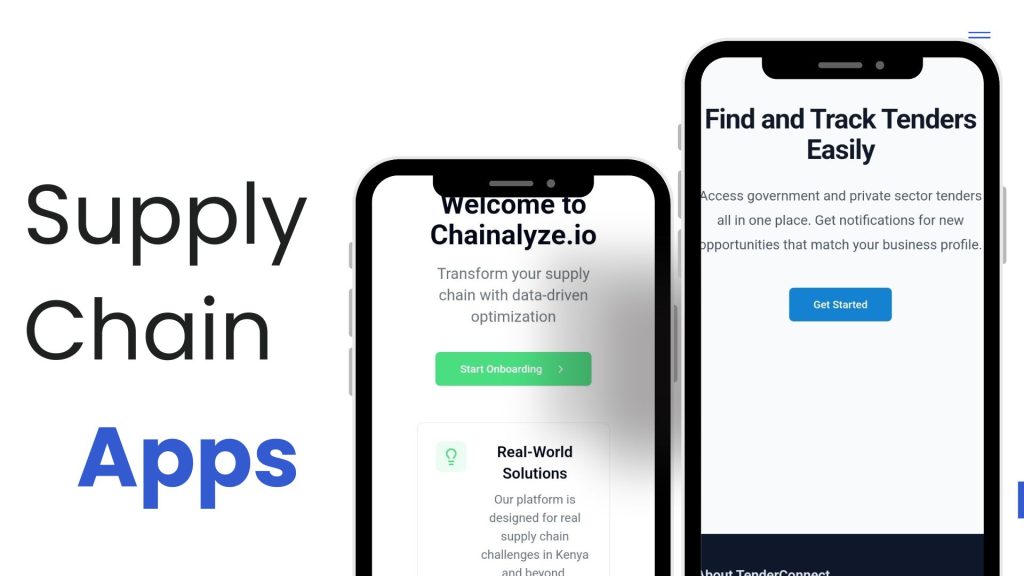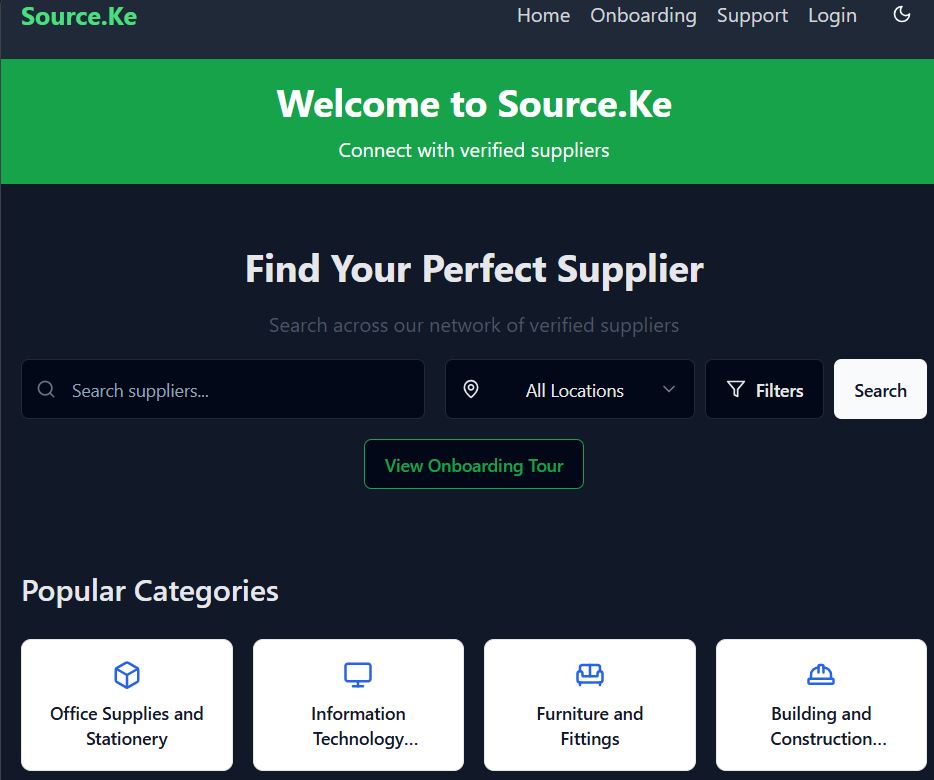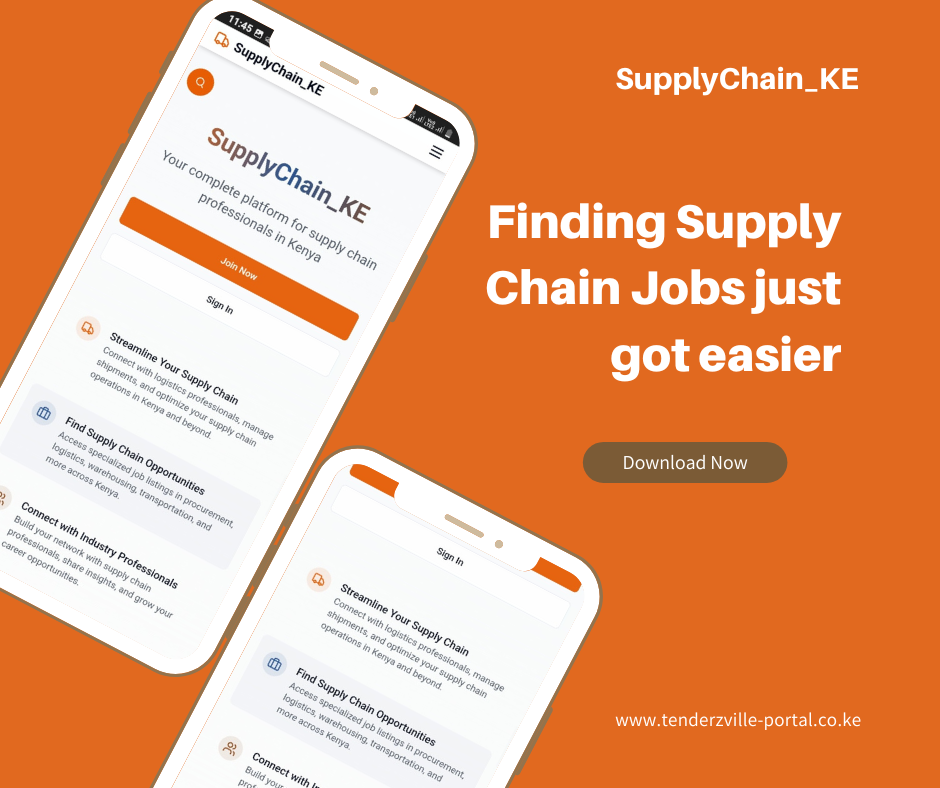Common Tender Mistakes and How to Avoid Them: Your Complete Guide to Kenya PPDA Compliance – Tender opportunities in Kenya
| Reading Time: 12 minutes
Winning government contracts in Kenya can transform your business, but a single mistake in your tender submission can cost you millions in lost opportunities. With the Public Procurement and Asset Disposal Act (PPDA) 2015 and its 2020 regulations governing all public procurement, understanding these rules isn’t optional—it’s essential for survival in Kenya’s competitive tender market.
After analyzing thousands of failed tender applications and speaking with procurement officers across government entities, HERE are the most common mistakes that eliminate otherwise qualified contractors from consideration. This comprehensive guide will help you avoid these costly errors and significantly improve your chances of winning government contracts and maximize your tender opportunities in Kenya.
The High Stakes of Tender Mistakes in Kenya – Tender opportunities in Kenya
Government procurement in Kenya represents billions of shillings annually, with opportunities ranging from small county contracts to massive infrastructure projects. However, the rejection rate for tender applications remains alarmingly high—often exceeding 70% due to preventable compliance issues rather than technical inadequacy.
Under Kenya’s Public Procurement and Asset Disposal Act, procurement entities must follow strict evaluation criteria. A single non-compliance issue can result in automatic disqualification, regardless of how competitive your technical or financial proposal might be.
Critical Mistake #1: Incomplete or Missing Mandatory Documents
The Problem: This is by far the most common reason for messing up tender opportunities in Kenya or get the tender disqualification badge. Procurement officers report that up to 60% of submissions are rejected due to missing or incomplete documentation.
What Goes Wrong:
– Missing tax compliance certificates from KRA
– Expired business registration certificates,
– Incomplete bank statements (less than required 3-month period) – but why fail at getting this if you are trully interested in tender opportunities in Kenya? okay, lets continue..
– Missing specialized licenses for regulated industries,
– Unsigned or incorrectly signed tender documents,
– Failure to provide certified copies where required.
PPDA Regulation Reference:
Under Regulation 58 of the Public Procurement and Asset Disposal Regulations 2020, all mandatory documents must be provided in the format specified in the tender document. Please when it comes totender opportunities in Kenya, read through the documents, Procurement and Supply Chain officers are experts, ask them? But, I again..digress..
How to Avoid This Mistake: Tender opportunities in Kenya
1. Create a Master Checklist:
Develop a comprehensive checklist of all documents required for different types of tenders
2. Regular Document Updates: Set calendar reminders to renew certificates before expiry
3. Verification System: Implement a two-person verification system where one person prepares documents and another reviews before submission
4. Digital Document Management: Maintain digital copies of all certificates and ensure they’re easily accessible
5. Professional Certification: Use certified public accountants or lawyers to verify document completeness for high-value tenders
**Pro Tip**: Always request clarification from the procurement entity if any document requirement is unclear. It’s better to ask than assume. Cool?
Critical Mistake #2: Misunderstanding Financial Threshold Requirements
The Problem: Kenya’s procurement regulations include specific financial thresholds that determine procurement methods and contractor eligibility. Many contractors either bid for contracts beyond their financial capacity or fail to understand the threshold implications.
Key Financial Thresholds in Kenya:
– Works contracts: Thresholds vary from KES 1 million to KES 1 billion
– Goods and services: Thresholds from KES 500,000 to KES 500 million
– Consultancy services: Specific thresholds for different procurement methods
What Goes Wrong:
– Bidding for contracts that exceed your annual turnover capacity
– Failing to demonstrate financial capability for the contract value
– Misunderstanding cash flow requirements
– Inadequate working capital for project execution
How to Avoid This Mistake:
1. Financial Capacity Assessment: Before bidding, ensure your annual turnover meets the minimum requirements (typically 3-5 times the contract value)
2. Banking Relationships: Maintain strong relationships with banks for performance guarantees and working capital
3. Joint Ventures: Consider partnerships for contracts beyond individual capacity
4. Accurate Financial Projections: Provide realistic cash flow projections in your tender
5. Professional Advice: Consult with quantity surveyors or financial advisors for complex projects
Critical Mistake #3: Technical Specification Non-Compliance
The Problem:
Many or some… (just to be clear ) contractors assume they can propose alternatives to specified requirements without following proper procedures. This leads to automatic disqualification for non-responsive bids.
Common Technical Errors:
– Proposing different materials or specifications without justification
– Failing to meet minimum technical requirements
– Incomplete technical documentation
– Misunderstanding local content requirements
– Ignoring environmental and safety standards
PPDA Compliance Requirements:
The PPDA requires strict adherence to technical specifications unless alternative proposals are explicitly allowed in the tender document.
How to Avoid This Mistake:
1. Detailed Specification Review: Have technical experts review all specifications before bidding
2. Site Visits: Always attend pre-bid meetings and site visits when offered
3. Clarification Requests: Submit formal requests for clarification on ambiguous specifications
4. Local Content Compliance: Understand and demonstrate compliance with local content requirements
5. Quality Assurance Plans: Develop comprehensive quality assurance and control plans
Critical Mistake #4: Pricing and Cost Calculation Errors
The Problem:
Incorrect pricing is a leading cause of tender rejection or project failure in Kenya. Common issues include unrealistic pricing, mathematical errors, and failure to account for all project costs. And this happens alot, and you simplylose out on the various tender opportunities in Kenya,see how you can rectify this? Good.
Common Pricing Mistakes:
– Arithmetic errors in cost calculations
– Unrealistically low prices that suggest inability to deliver
– Failure to include VAT correctly
– Missing cost components (transport, insurance, etc.)
– Currency conversion errors for international supplies
How to Avoid This Mistake:
1. Multiple Review Process: Have different people verify all calculations
2. Market Research: Conduct thorough market research for accurate pricing
3. Contingency Provisions: Include appropriate contingencies for risk management
4. Professional Quantity Surveying: Use qualified quantity surveyors for construction projects
5. VAT Compliance: Ensure correct VAT application and documentation
Critical Mistake #5: Failure to Understand Evaluation Criteria
The Problem:
Suppliers / contractors tend to focus solely on price without understanding how tenders are evaluated in Kenya. You see tender opportunities in Kenya, wham, apply. Pause first. The PPDA requires specific evaluation methodologies that combine technical and financial considerations.
Evaluation Methods in Kenya:
– Quality and Cost-Based Selection (QCBS)
– Least Cost Selection (LCS)
– Fixed Budget Selection (FBS)
– Quality-Based Selection (QBS)
What Contractors Miss in tendering opportunities in Kenya:
– Weighting between technical and financial scores
– Mandatory pass marks for technical evaluation
– Local contractor preferences and reservations
– Past performance requirements
How to Avoid This Mistake:
1. Understand Evaluation Methodology: Study the evaluation criteria section carefully
2. Balanced Approach: Don’t focus only on price—invest in technical quality
3. Past Performance Documentation: Maintain detailed records of successful project completions
4. Local Partnership: Partner with local contractors for reserved categories
5. Technical Proposal Excellence: Invest in professional technical proposal writing.
Critical Mistake #6: Ignoring Legal and Regulatory Compliance
The Problem:
Kenya’s regulatory environment includes multiple compliance requirements beyond basic business registration. Contractors often overlook sector-specific regulations.
Key Compliance Areas:
– Environmental Impact Assessment (EIA) requirements
– National Construction Authority (NCA) registration
– Professional licensing (architects, engineers, etc.)
– Occupational health and safety compliance
– Labor law compliance
How to Avoid This Mistake:
1. Regulatory Mapping: Identify all applicable regulations for your industry
2. Professional Memberships: Maintain active membership in relevant professional bodies
3. Compliance Calendar: Track renewal dates for all licenses and permits
4. Legal Consultation: Engage legal counsel for complex regulatory requirements
5. Continuous Learning: Stay updated on regulatory changes through professional associations
Check out PPRA
Critical Mistake #7: Poor Project Management and Delivery Planning
The Problem:
Some contractors win tenders but fail during implementation due to poor planning. This damages reputation and affects future tender opportunities in Kenya.
Common Implementation Failures:
– Unrealistic project timelines
– Inadequate resource allocation
– Poor risk management
– Insufficient stakeholder engagement
– Lack of monitoring and evaluation systems
How to Avoid This Mistake:
1. Detailed Project Planning: Develop comprehensive project implementation plans
2. Resource Management: Ensure adequate human and financial resources
3. Risk Assessment: Conduct thorough risk assessment and mitigation planning
4. Stakeholder Engagement: Develop stakeholder management strategies
5. Monitoring Systems: Implement robust project monitoring and evaluation systems
PPDA 2020 Regulation Updates: What You Need to Know
The Public Procurement and Asset Disposal Regulations 2020 introduced several key changes that affect tender compliance:
Key Updates:
1. Enhanced Electronic Procurement: Integration requirements with government systems
2. Citizen Contractor Preferences: Updated thresholds and requirements
3. Conflict of Interest Provisions: Stricter disclosure requirements
4. Sustainable Procurement: Environmental and social considerations
5. Framework Agreements: New provisions for long-term contracting
Action Items:
– Review and update your tender preparation processes
– Ensure compliance with new electronic submission requirements
– Update conflict of interest disclosure procedures
– Incorporate sustainability considerations in proposals
Building a Winning Tender Strategy for Tender opportunities in Kenya
Pre-Tender Preparation:
1. Market Intelligence: Develop systems for tracking tender opportunities
2. Capability Assessment: Regularly assess and upgrade your capabilities
3. Partnership Development: Build strategic partnerships for larger contracts
4. Document Management: Maintain up-to-date compliance documentation
5. Team Training: Regular training on PPDA requirements and best practices
During Tender Preparation:
1. Early Start: Begin preparation immediately after tender announcement
2. Team Coordination: Assign clear roles and responsibilities
3. Quality Control: Implement multiple review stages
4. Professional Support: Engage professional services where necessary
5. Deadline Management: Submit well before deadlines to avoid last-minute issues
Post-Submission Strategy:
1. Debriefing Sessions: Request feedback on unsuccessful bids
2. Continuous Improvement: Update processes based on lessons learned
3. Relationship Building: Maintain professional relationships with procurement officers
4. Performance Tracking: Monitor and document project performance for future reference
Industry-Specific Considerations
Construction and Infrastructure:
– NCA registration and classification requirements
– Environmental impact assessment compliance
– Local content requirements for materials
– Safety and quality standards
ICT and Technology:
– Data protection and cybersecurity requirements
– Local content and skills transfer provisions
– Technical standards and certifications
– Intellectual property considerations
Consultancy Services:
– Professional qualifications and registrations
– Methodology and approach requirements
– Local expertise and knowledge transfer
– Conflict of interest management
Goods and Supplies:
– Standards and quality certifications
– Local assembly and manufacturing requirements
– Warranty and after-sales service provisions
– Supply chain sustainability
Red Flags That Lead to Automatic Disqualification -Tender Opportunities in Kenya
Document-Related Red Flags:
– Photocopied documents where originals are required
– Expired certificates or licenses
– Incorrect company names or details
– Missing signatures or seals
Technical Red Flags:
– Specifications that don’t meet minimum requirements
– Unclear or contradictory technical proposals
– Missing mandatory technical documentation
– Non-compliance with standards
Financial Red Flags:
– Unrealistic pricing (too high or too low)
– Mathematical errors in calculations
– Inadequate financial capacity demonstration
– Missing financial guarantees
Technology and Digital Compliance
With Kenya’s move toward electronic procurement through the Electronic Government Procurement (EGP) system, contractors must adapt to digital requirements:
Digital Compliance Requirements – Tender Opportunities in Kenya:
1. System Registration: Proper registration on government procurement portals
2. Digital Signatures: Valid digital certificates for document signing
3. Electronic Submission: Compliance with online submission procedures
4. System Integration: Understanding of e-GP and other government systems
5. Cybersecurity: Adequate cybersecurity measures for sensitive information
Legal Remedies and Appeals Process
When tender decisions seem unfair or non-compliant, contractors have legal remedies available:
Appeal Process:
1. Internal Review: Request review by the procurement entity
2. PPRA Complaints: File complaints with the Public Procurement Regulatory Authority
3. Legal Action: Pursue judicial review through the courts
4. Alternative Dispute Resolution: Consider mediation or arbitration
Important Deadlines:
– Internal reviews: Must be requested within specified timeframes
– PPRA complaints: Strict deadline requirements apply
– Legal action: Court procedures have specific timelines
Emerging Trends and Future Considerations
Sustainability Requirements:
– Environmental compliance becoming mandatory
– Social impact considerations in evaluation
– Circular economy principles in procurement
– Climate change adaptation requirements
Technology Integration:
– Artificial intelligence in evaluation processes
– Blockchain for transparency and traceability, have you signed upfor our solution yet?
– IoT integration for project monitoring
– Digital payment and financial management
Capacity Building Initiatives:
– Government programs for contractor development
– Youth and women contractor support schemes
– Skills development and training requirements
– Technology transfer and innovation promotion
- If you know a company specializing in tender training, let them know we are looking for collaboration..
Your Action Plan for Tender opportunities in Kenya Success
Immediate Actions (This Week):
1. Audit your current document portfolio for completeness and validity
2. Review recent tender applications for common mistake patterns
3. Set up document renewal reminders in your calendar
4. Create a standardized tender preparation checklist
Short-term Actions (Next Month):
1. Develop industry-specific compliance procedures
2. Build relationships with professional service providers
3. Implement a quality assurance system for tender submissions
4. Start building strategic partnerships for larger contracts
Long-term Strategy (Next 6 Months):
1. Invest in capability development and certifications
2. Develop comprehensive project management systems
3. Build market intelligence and opportunity tracking systems
4. Create sustainable competitive advantages in your sector
Conclusion: Excellence in Tender Compliance – Tender opportunities in Kenya
Success in Kenya’s government procurement market requires more than competitive pricing or technical capability—it demands excellence in compliance and process management. The contractors who consistently win government contracts are those who treat tender compliance as a strategic advantage rather than a bureaucratic hurdle.
By avoiding these common mistakes and implementing robust compliance systems, you’ll not only increase your chances of winning individual tenders but also build a reputation for reliability and professionalism that opens doors to larger opportunities.
Remember, every rejected tender is a learning opportunity. Use feedback from unsuccessful bids to refine your processes and improve future submissions. The investment in proper tender preparation always pays dividends in the long run.
The government procurement market in Kenya continues to evolve, with increasing emphasis on transparency, accountability, and value for money. Contractors who stay ahead of these trends and maintain the highest standards of compliance will be best positioned to capitalize on the billions of shillings in opportunities available in the coming years.
—
Need Help with Your Next Tender Application?
Get intouch.
Stay Updated: Subscribe to our tender alerts and regulatory updates to never miss an opportunity or important compliance change.
Join Our Community: Connect with other contractors and procurement professionals in our exclusive forums and networking events.
This guide is based on current PPDA regulations and best practices as of July 2025. Always consult with legal and procurement professionals for specific tender requirements and the most current regulatory information.



